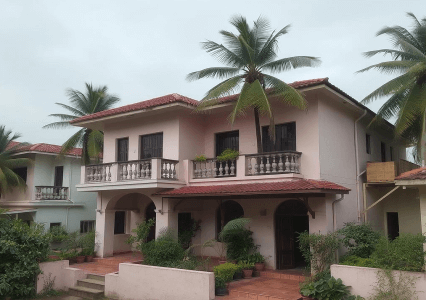
Introduction to Energy-Efficient Windows: Energy-efficient windows are designed to reduce energy consumption by minimizing heat loss in the winter and heat gain in the summer. Here are the key features that contribute to their efficiency:
1. Low-Emissivity (Low-E) Glass
- Coating: Low-E glass has a special coating that reflects infrared light, keeping heat inside in the winter and outside in the summer.
- UV Protection: This coating also helps block ultraviolet (UV) rays, reducing fading of interior furnishings.
2. Multiple Panes
- Double or Triple Glazing: Energy-efficient windows typically have two or three panes of glass, creating insulating air or gas layers between the panes.
- Increased Insulation: Multiple panes improve thermal insulation, reducing heat transfer.
3. Gas Fills
- Argon or Krypton Gas: These inert gases are filled between the panes, offering better insulation than regular air due to their lower thermal conductivity.
- Enhanced Performance: Gas fills improve the window's overall energy efficiency and thermal performance.
4. Insulated Frames
- Materials: Frames made from wood, vinyl, fiberglass, or composite materials are better insulators than traditional aluminum frames.
- Thermal Breaks: Frames with built-in thermal breaks (insulating sections) further reduce heat transfer.
5. Warm Edge Spacers
- Spacer Bars: These are placed between the panes of glass to maintain the proper distance and seal the edges.
- Improved Insulation: Warm edge spacers are made from materials with low thermal conductivity, reducing heat loss around the edges of the window.
6. Weatherstripping and Seals
- Tight Seals: High-quality weatherstripping and tight seals prevent drafts and air leakage.
- Durability: Effective seals maintain their integrity over time, ensuring consistent energy performance.
7. Window Tinting
- Solar Control: Tinted glass reduces solar heat gain, helping keep interiors cooler in the summer.
- Glare Reduction: Tinting also reduces glare, enhancing indoor comfort.
8. UV-Blocking Coatings
- Sun Protection: UV-blocking coatings prevent harmful UV rays from entering, protecting both skin and furnishings.
9. Smart Glass Technology
- Dynamic Tinting: Some energy-efficient windows feature electrochromic or photochromic technologies that allow the glass to change tint in response to sunlight or a manual switch, optimizing energy efficiency and comfort.
10. Proper Installation
- Professional Installation: Ensuring windows are properly installed is crucial for maximizing their energy efficiency. Poor installation can lead to gaps and leaks that undermine performance.
BENEFITS OF ENERGY-EFFICIENT WINDOWS
Energy-efficient windows offer a range of benefits that contribute to comfort, cost savings, and environmental sustainability. Here are some of the key benefits:
- Lower Energy Bills: Energy-efficient windows provide better insulation, which helps maintain indoor temperatures. This reduces the need for heating in the winter and cooling in the summer, leading to significant savings on energy bills.
- Enhanced Comfort
- Temperature Regulation: These windows help maintain a consistent indoor temperature by reducing drafts and cold spots.
- Reduced Condensation: Better insulation minimizes condensation on windows, preventing moisture-related issues such as mold growth.
- Improved Insulation
- Low-E Coatings: Low-emissivity (Low-E) coatings on the glass reflect heat back into the room during winter and keep heat out during summer.
- Multiple Panes: Double or triple glazing provides extra layers of insulation, further enhancing thermal performance.
- Noise Reduction
- Soundproofing: The multiple layers of glass and insulating gas fills (like argon or krypton) help reduce outside noise, creating a quieter indoor environment.
- UV Protection
- Reduced Fading: Energy-efficient windows block a significant portion of harmful ultraviolet (UV) rays, protecting furniture, flooring, and artwork from fading and damage.
- Environmental Benefits
- Lower Carbon Footprint: By reducing the energy required for heating and cooling, energy-efficient windows help decrease greenhouse gas emissions.
- Sustainable Materials: Many energy-efficient windows are made from sustainable materials and can be recycled at the end of their life cycle.
- Increased Property Value
- Attractive to Buyers: Homes with energy-efficient features, including windows, are more attractive to potential buyers, potentially increasing the property’s market value.
- Condensation Resistance
- Improved Indoor Air Quality: By minimizing condensation, these windows help reduce the risk of mold and mildew growth, contributing to better indoor air quality.
- Enhanced Security
- Stronger Materials: Energy-efficient windows often use laminated or tempered glass, which is more resistant to breakage and can enhance home security.
- Aesthetic Appeal
- Modern Designs: Available in various styles and designs, energy-efficient windows can enhance the visual appeal of a home while providing functional benefits.
Conclusion: Energy-efficient windows are a smart investment for homeowners looking to improve comfort, save money, and contribute to a healthier environment.


